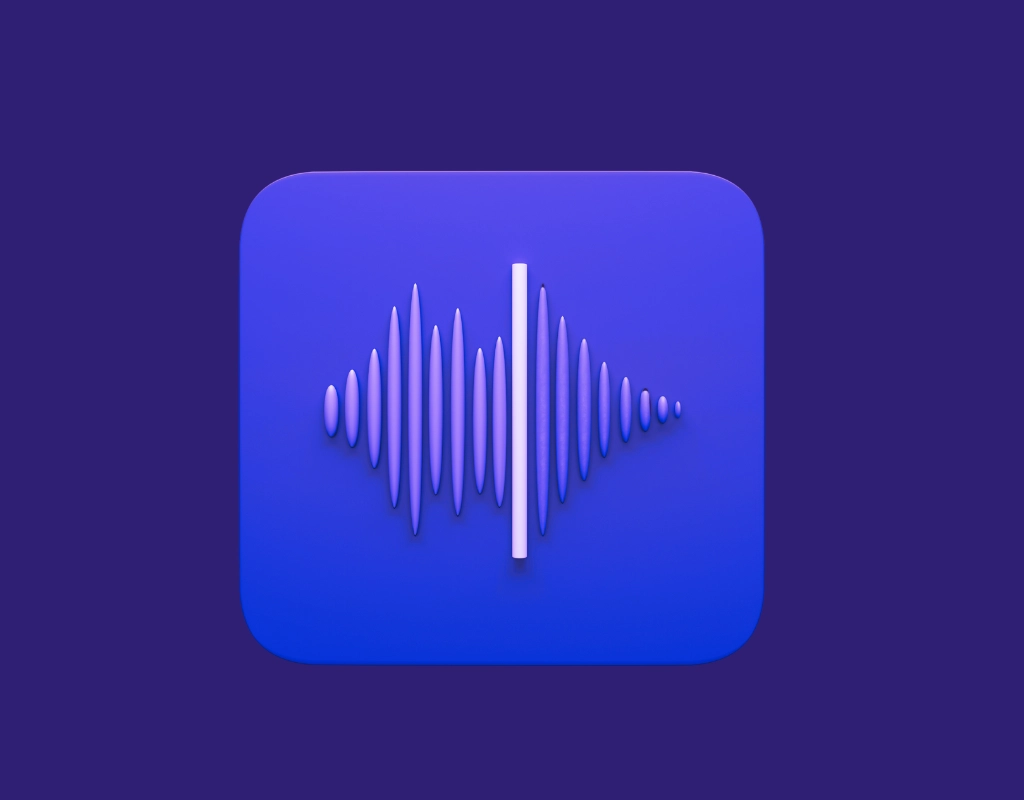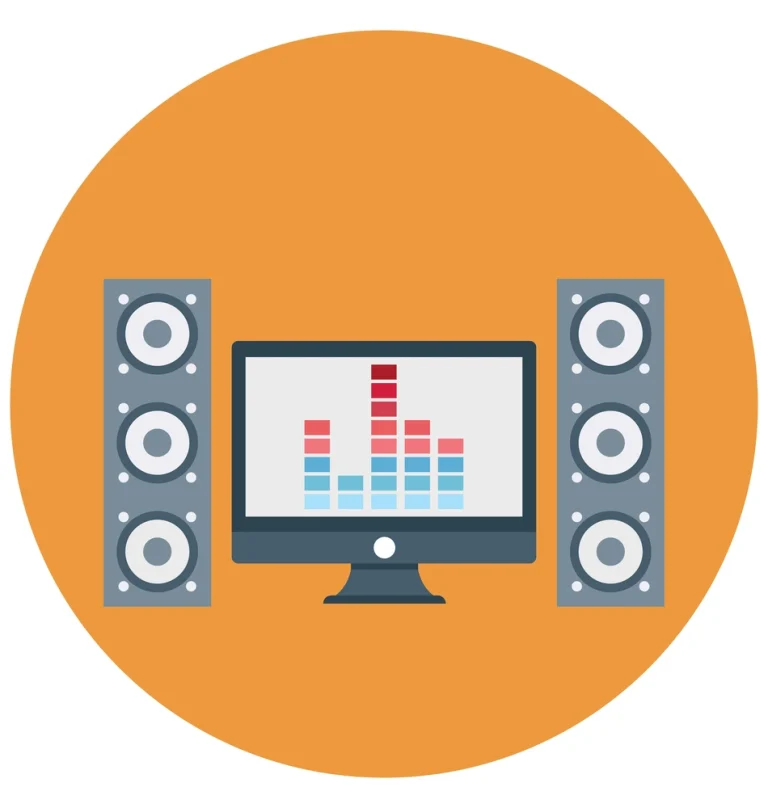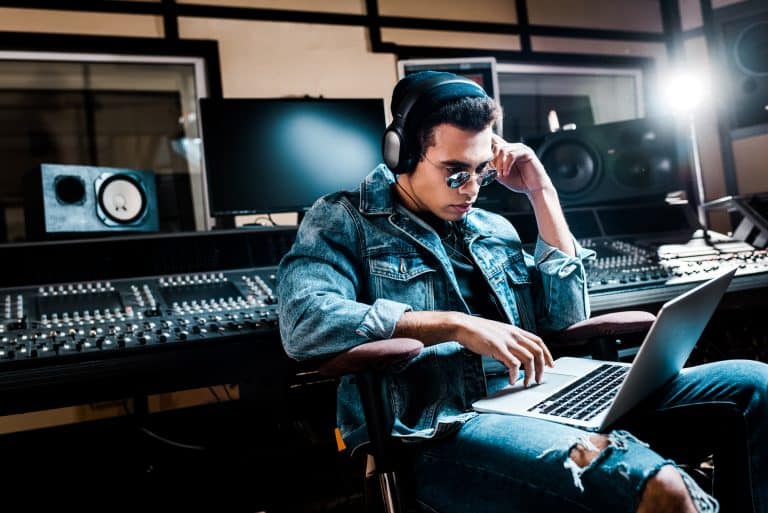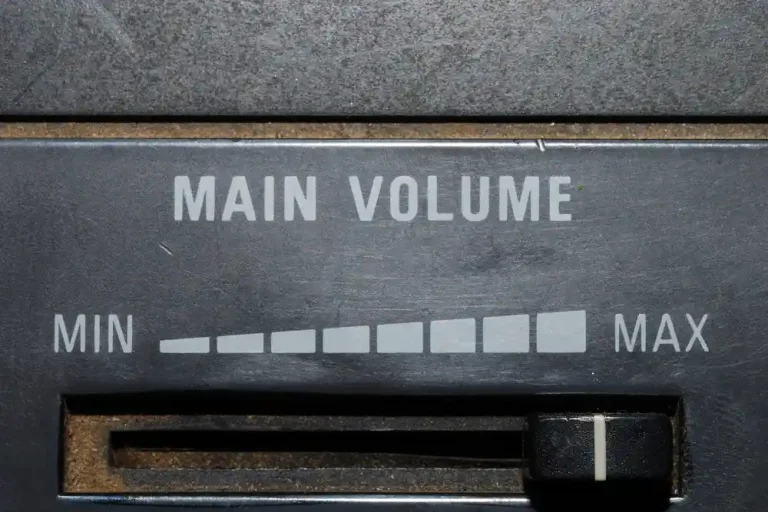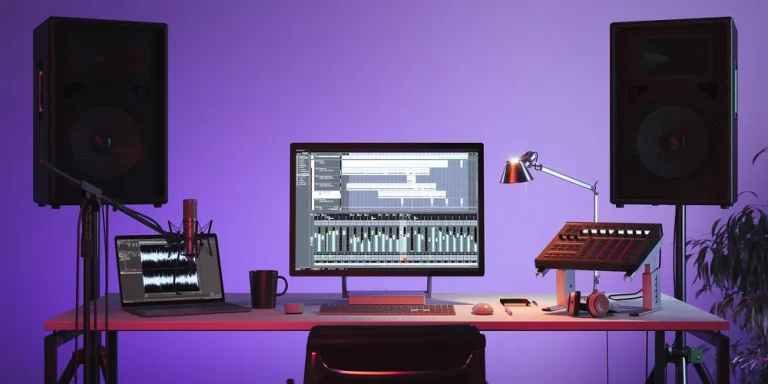Reverb vs Delay: Exploring Essential Effects for Your Sound
Both reverb and delay are powerful tools for musicians, adding depth, dimension, and texture to guitar sounds.
Although each offers unique effects that can transform your music in distinct ways, knowing when to use them is vital for achieving the desired outcome.
In this blog post, we’ll dive deep into the world of reverb vs delay and explore their differences, applications in various genres and styles, tips on using them together effectively and choosing the right effect for your sonic needs.
Let’s embark on a journey that could elevate your soundscapes to new heights with these essential audio effects!
Key Takeaways:
- Reverb and delay are powerful tools for musicians to add depth, dimension, and texture to guitar sounds.
- Each effect offers unique transformations to music, and knowing when to use them is vital for achieving the desired outcome.
- Reverb creates a sense of space and ambiance, while delay creates an echo effect.
- To choose between reverb and delay, consider the specific needs of your music project.
- Both effects can be used together to create a unique sound that complements your music and helps it stand out.
- When applying reverb and delay, it’s essential to use moderation and carefully adjust the wet/dry mix and other parameters to achieve a natural sound that doesn’t muddy the mix.
Table of Contents
What is Reverb?
Reverb (reverberation) is the echo of sound that bounces off surfaces like walls and ceilings before reaching our ears. It happens naturally in any space with things for sound to bounce off.
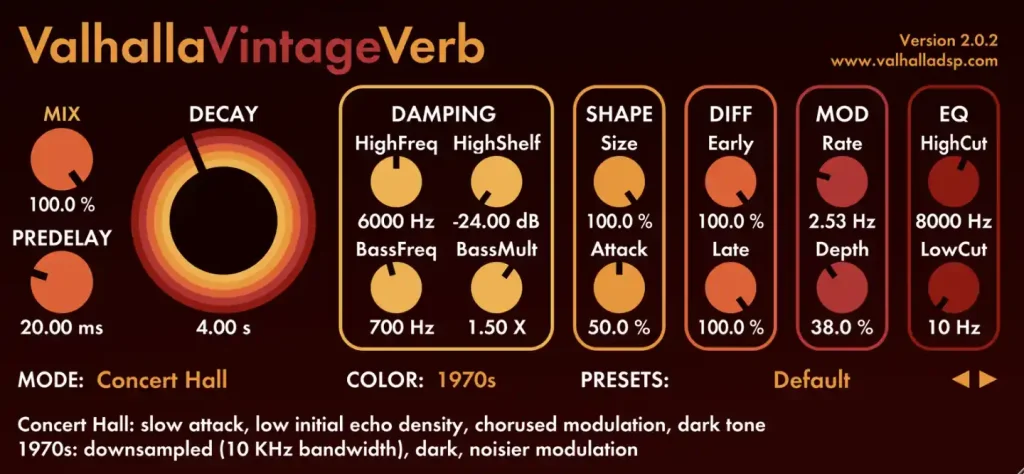
People use devices and computer programs to make reverb on purpose in music and sound work. This helps create a certain feel or atmosphere in the sound.
Reverb can be added to live or recorded sounds to make them more enjoyable or interesting.
There are multiple types of reverb, each with unique properties:
- Room Reverb: Simulates small to medium-sized spaces with fast decay times.
- Hall Reverb: Mimics the sound of large concert halls or venues characterized by longer decay times and more diffused reflections.
- Plate Reverb: An artificial reverb that sends sound through a metal plate, resulting in a dense and smooth reverberation.
- Spring Reverb: Generated by sending sound through metal springs, this type of reverb is often found in guitar amplifiers and offers a distinctive, somewhat metallic sound.
When mixing and producing music, reverb effects are often used to create an illusion of space or to add depth to the recording.
The right amount of reverb can help blend and glue different elements together, while too much can make the mix sound muddy and unclear.
To use reverb effectively, choose a type that fits the style and mood of your music and adjust the settings to create the desired sense of space.
| Reverb Type | Characteristics | Common Uses |
|---|---|---|
| Room Reverb | Small to medium-sized spaces, fast decay times | Drums, vocals, acoustic instruments |
| Hall Reverb | Large spaces, longer decay times, diffused reflections | Orchestral music, epic sounds, spacious mixes |
| Plate Reverb | Dense and smooth reverberation | Vocals, guitars, adding warmth and thickness |
| Spring Reverb | Distinctive, metallic sound | Guitar amplifiers, special effects, retro sounds |
What is Delay?
Delay is an audio effect that works by recording the original sound and then playing it back after a short period. This creates a series of echoes or repeated sounds.
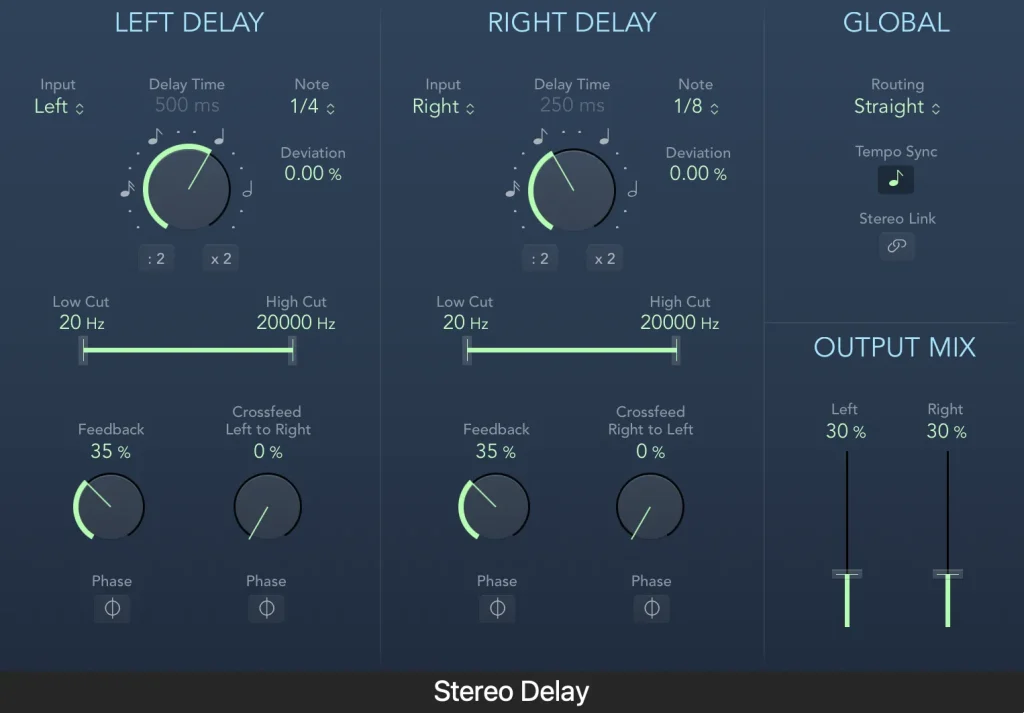
This effect aims to reproduce the natural reflection of sound that occurs when it bounces off a far-hard surface, such as a mountain or building (eMastered).
When using delay, you have control over various parameters, which allow you to shape the resulting sound effect. These parameters typically include:
- Delay Time: The duration between the original sound and its first echo
- Feedback: The number of echoes or repetitions
- Wet/Dry mix: The balance between the original sound and the delayed audio
Depending on the desired effect, these different parameters combine to create a wide range of auditory possibilities.
For instance, shorter delay times and minimal feedback are suitable for producing slapback echo, while longer delay times and moderate feedback create a more pronounced, spaced-out effect.
| Parameter | Function | Example |
|---|---|---|
| Delay Time | Controls the duration between the original sound and the first echo | The shorter delay for slapback echo, a longer delay for a spacious effect |
| Feedback | Adjusts the number of echoes or repetitions of the sound | Minimal feedback for a subtle effect, higher feedback for a repeating pattern |
| Wet/Dry Mix | Changes the balance between the original sound and the echoed audio | A higher mix setting emphasizes the delay effect, while a lower mix setting preserves the original sound |
Reverb Vs Delay: How They Work Together
Both reverb and delay are time-based audio effects that can bring a unique atmosphere to your music.
They can enhance each other and create an even richer sound when used in conjunction.
Here is how they complement each other:
Reverb provides a sense of space to your audio by simulating the acoustic environment of a room or hall. It helps to give your sound an atmospheric feel and emphasizes the natural reflections of the audio source.
On the other hand, delay creates repetitions of your original audio signal with specific time intervals and feedback settings, resulting in a sound that seems to bounce back multiple times.
Combining both effects can add depth and sustain to your audio, making it sound more polished and full.
You can experiment with different combinations of reverb and delay settings to find the perfect balance for your genre and style.
To create a traditional ambient sound, you can adjust the delay mix to exceed 50% and set the feedback to approximately 5 repeats. Then, include a reverb with a decay rate of roughly 70% and a mix level that surpasses the 50% threshold. (source).
Consider the following when combining reverb and delay:
- Choose the type of reverb – room, and hall are common options.
- Experiment with different delay times and feedback settings.
- Adjust the mix levels of both effects to achieve the desired balance.
Here’s a table showcasing various combinations of reverb and delay to create different sonic textures:
| Reverb Type | Delay Time | Feedback | Mix | Characteristics |
|---|---|---|---|---|
| Room | Short | Low | Medium | Intimate, subtle atmosphere |
| Hall | Long | High | High | Expansive, cinematic sound |
| Plate | Medium | Medium | Medium | Bright, focused presence |
By experimenting with different settings and finding the right balance between the effects, you can create a unique sound that complements your music and helps it stand out.
Applications in Music Production
Reverb and delay are powerful tools in music production that serve different purposes. Understanding when and how to use them effectively is key to creating a polished mix.
Reverb, which simulates the sound waves reflecting off surfaces in a space, is often used to create a sense of depth and atmosphere.
Some common uses for reverb in music production include:
- Introducing a sense of space and depth to dry recordings
- Enhancing the natural ambiance of a recorded instrument or vocal
- Creating a sense of distance or intimacy between elements in the mix
On the other hand, delay creates a copy of a signal and plays it back at specific time intervals to emulate an echo effect.
Various applications of delay in music production are:
- Thickening up guitars, vocals, or other instruments
- Adding rhythmic interest to a part or adding a sense of groove
- Create powerful build-ups and transitions in electronic music
Sometimes, you might find it necessary to combine reverb and delay to achieve the desired result.
The following table summarizes key differences and applications:
| Effect | Key Differences | Main Applications |
|---|---|---|
| Reverb | Emulates sound waves reflecting off surfaces to create a sense of space and dimension | Adding depth, atmosphere, and natural ambience to instruments and vocals |
| Delay | Creates a copy of a signal and plays it back at a desired time interval to emulate an echo effect | Thickening instruments, adding rhythmic interest, and creating build-ups and transitions |
When applying reverb and delay, it’s essential to use moderation and carefully adjust the wet/dry mix and other parameters to achieve a natural sound that doesn’t muddy the mix.
Remember, the goal is to enhance your track, not overwhelm it with excessive effects.
Choosing Between Reverb and Delay
When deciding between reverb and delay, it’s essential to consider your desired outcome for the sound.
Both effects have unique characteristics that make them suitable for specific situations.
Consider the following aspects when choosing between reverb and delay:
- Do you want to create a sense of space or ambiance? Opt for reverb.
- Are you looking to add depth or an echo-like effect without introducing additional space or texture? Choose delay.
- Do you want to emphasize rhythm or timing in the mix? Use delay to create rhythmic patterns.
- Is the goal to create complex soundscapes with multiple layers or reflections? Combine reverb and delay for a rich sound.
It’s essential to understand how varying the settings of reverb and delay impacts the sound.
Here’s a comparison of the essential parameters of both effects:
| Effect | Parameter | Description |
|---|---|---|
| Reverb | Decay Time | Controls how long the reflections last before fading out. |
| Reverb | Size | Adjusts the perceived size of the virtual space. |
| Delay | Time | Sets the interval at which the echo repeats. |
| Delay | Feedback | Controls the amount of delay signal sent back into the input, affecting the number of repetitions. |
Ultimately, the right choice depends on your creative vision and the specific requirements of your project. Experimenting with both effects can offer new insights and enhance your mix in numerous ways.
Conclusion
In summary, you now understand the differences and similarities between reverb and delay effects.
The main points are:
- Reverb creates a sense of space and ambiance by simulating sound waves reflecting off surfaces.
- Delay creates an echo effect by playing back a digital copy of the sound at a specified time interval.
- To choose between reverb and delay, consider the specific needs of your music project.
- Reverb is great for creating a sense of space and atmosphere, while delay can add depth and complexity.
Don’t be afraid to experiment with both effects to discover unique sonic textures and enhance your musical creations. Happy mixing!
Frequently Asked Questions
What is the main difference between delay and reverb?
Delay is the effect of replicating a sound with a specific time interval between repetitions, while reverb is the diffusion of sound waves created by multiple reflections from surfaces in a space.
Simply put, delay creates discrete echoes, whereas reverb creates a sense of ambiance or spatial context.
Should I use delay or reverb for vocals?
Both delay and reverb can be used to add depth and dimension to vocals.
Reverb can help situate vocals within a specific space, while delay can create a sense of depth or thickness to the vocal track.
The choice depends on your desired sound and the context of the song. Experiment with both effects and trust your ears to make the final decision.
Can delay and reverb be used together effectively?
Yes, combining delay and reverb can produce rich and complex soundscapes that showcase your music’s depth.
Utilizing both effects can help create a sense of space, add texture, and enhance the overall mood of your tracks. The key is to balance the two effects so they complement each other without overwhelming the mix.
Which should come first in the signal chain: reverb or delay?
There is no strict rule for the order of these effects in a signal chain, but a common approach is to place the reverb after the delay. This can help create a more natural sound by simulating the way soundwaves would reflect within a space after being repeated by a delay.
However, feel free to experiment with different orders to achieve the desired sound for your music.
How does reverb differ from echo?
Reverb is a result of multiple sound reflections within a space, creating a sense of ambiance and context.
Echo, on the other hand, is a clearer repetition with longer time intervals between the original sound and its reflections, which can be achieved with the help of a delay effect. Reverb is more diffuse and omnipresent, whereas echo is a distinct repetition.
How does chorus compare to delay and reverb?
Chorus, similar to delay and reverb, is a time-based effect. It works by adding a slightly detuned and delayed duplicate of the original sound, which results in a thicker and more “swirly” sound.
While delay and reverb focus on creating space and ambiance, chorus is geared towards modifying the original sound to add fullness and warmth. Each effect serves a different purpose and can be used individually or combined to achieve a wide array of sonic textures.

